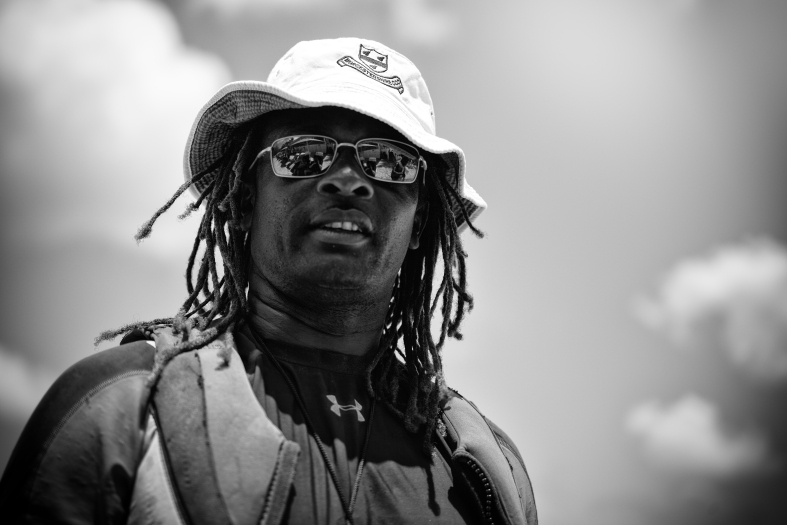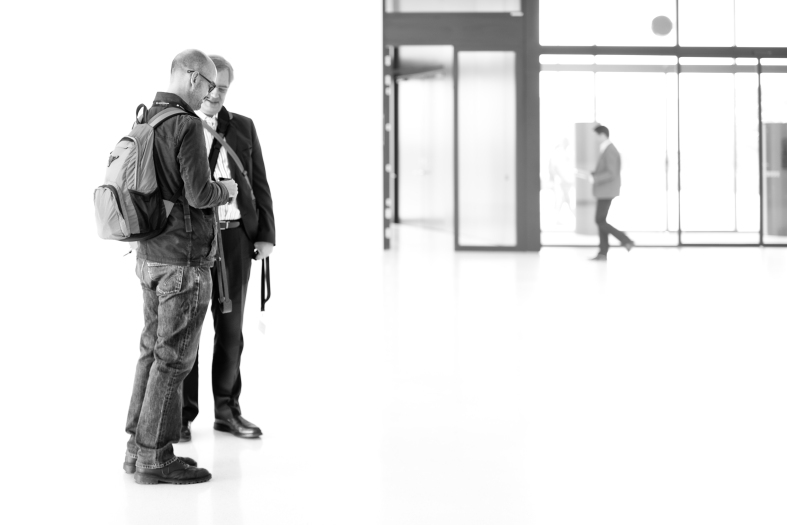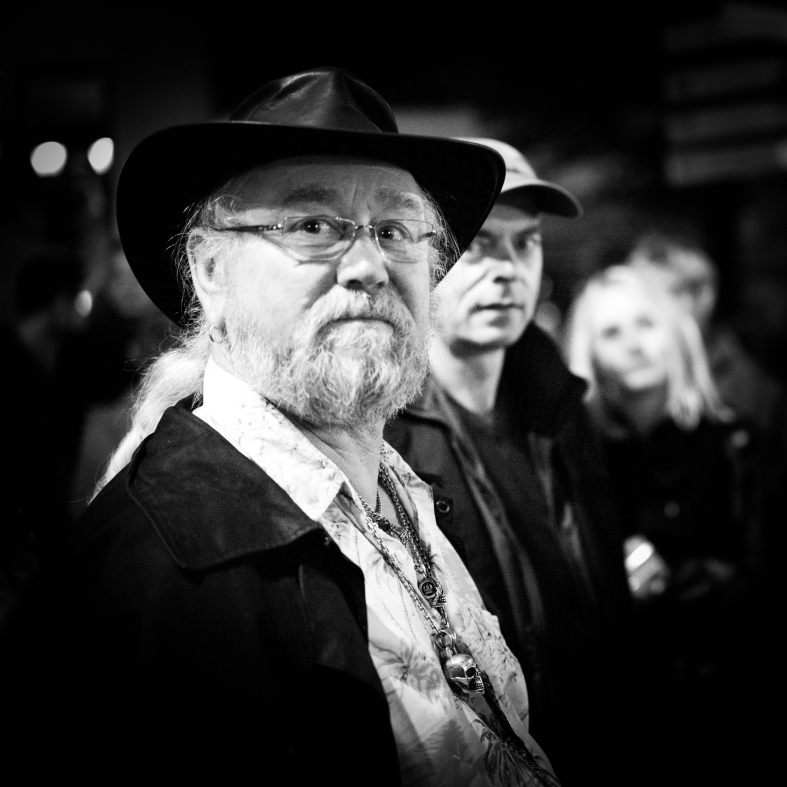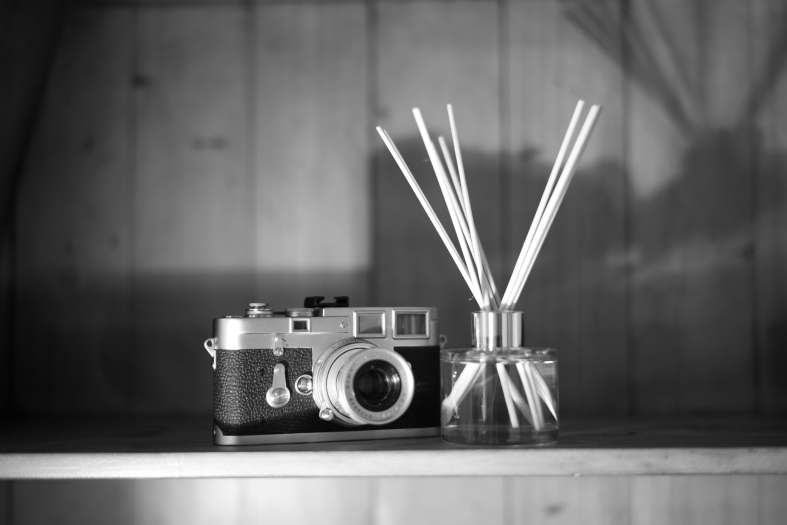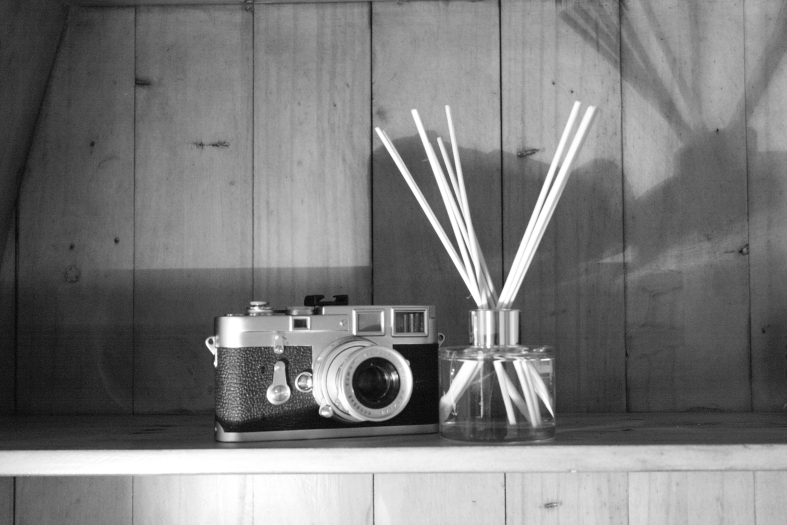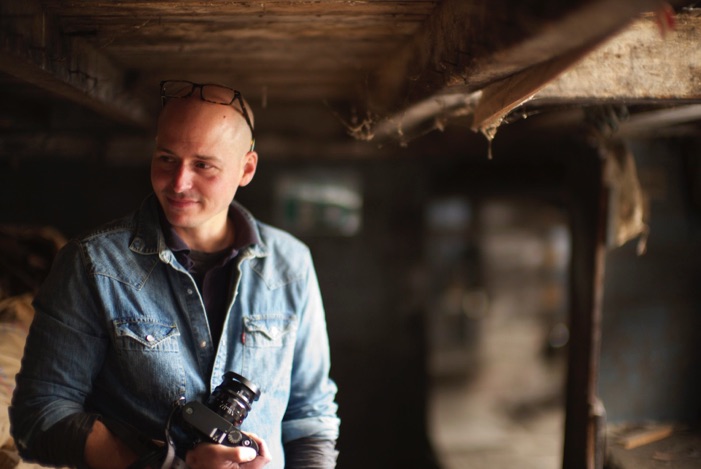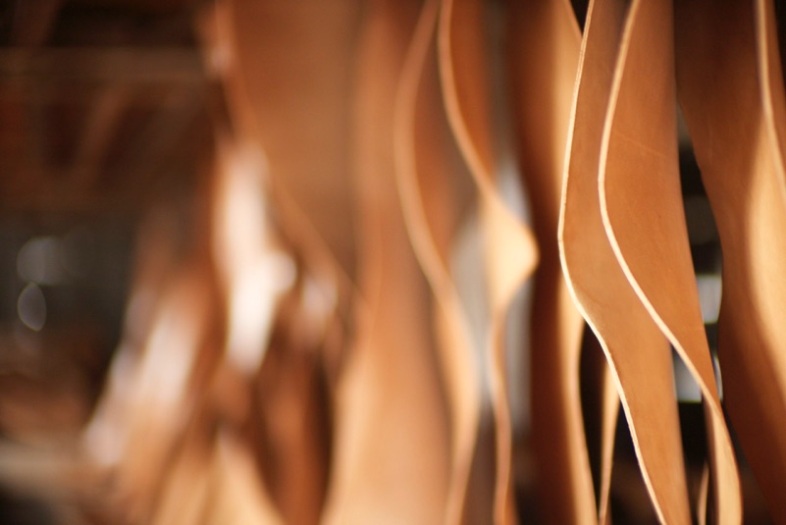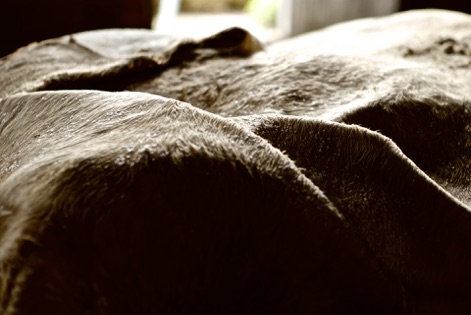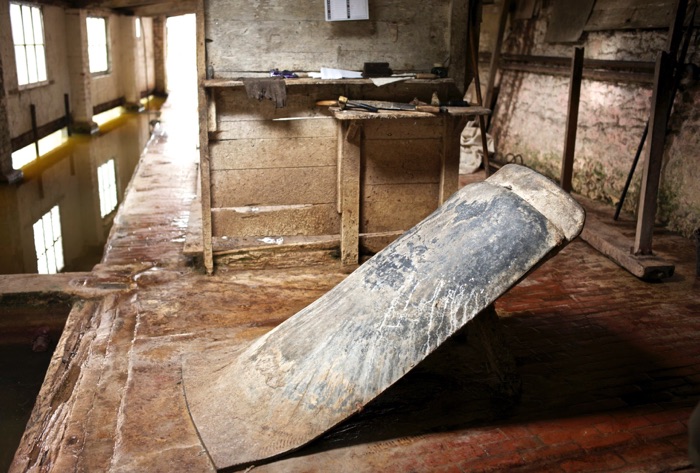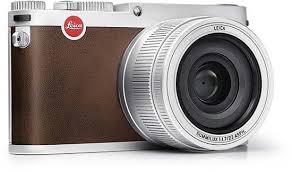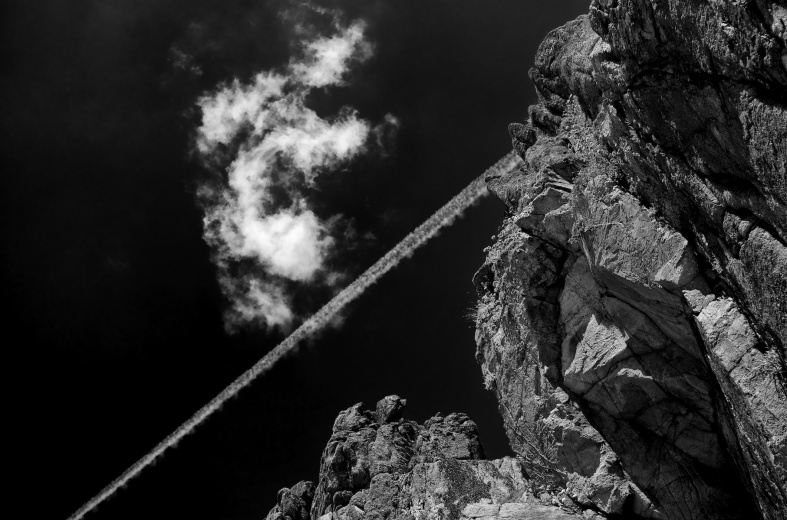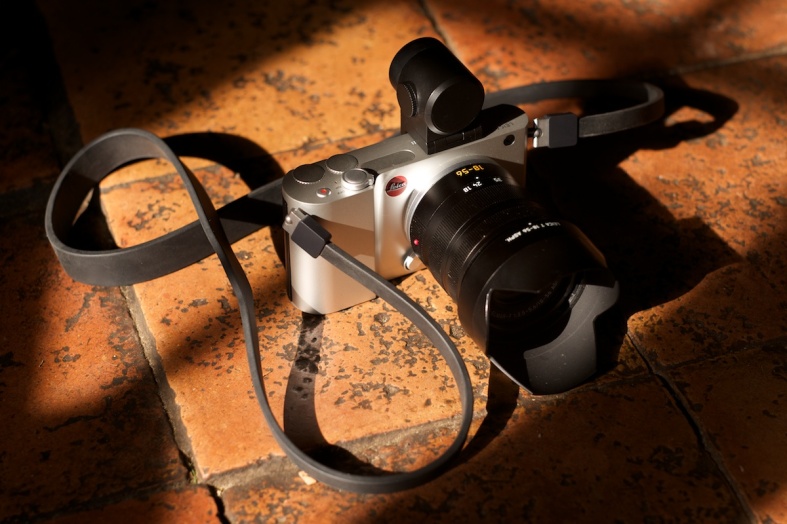
The Leica T with the 18-56 Vario-Elmar Asph and EVF (shot with M and 75 ‘cron APO)
The Introduction
Taifun has been the code name for the Leica T. I got a first glimpse of the camera when visiting Solms in May 2013; it’s a pity everyone’s first sight of the camera couldn’t be by having it thrust into their hands, it feels wonderful; completely solid and really beautifully made, but most of all it just seems quite different from anything else. Looking at pictures brings to mind several other cameras, but in the flesh (aluminium) it’s much more reminiscent of picking up a unibody Apple computer for the first time.
I received a prototype camera to test in October 2013, just before heading off to Lanzarote for a week. Since then Taifun has been to Cornwall, the Lake District, Sauze d’Oulx, Monaco, France and Holland and been through several iterations of hardware and firmware.
Please note that this report is not meant to be a review. As a camera tester my loyalties are to Leica, and it’s better to make this clear at the outset. On the other hand I like to think of myself as an honest guy, and there is nothing here which I do not believe to be the case. If I was not happy with the camera I would not be writing this article .
My intention is to provide some entertainment for others (like myself) who like to read about new cameras when they’re released. Worth noting also that this site has absolutely no financial benefit – no adverts, and I’m not being paid by anyone for writing the article. I do have an ulterior motive, but of course you can ignore it (see the end of the article).

The Leica T with the 23mm Summicron Asph and no EVF (shot with M and 75 ‘cron APO)
The Camera
The Camera is made from a single block of Aluminium (unibody) with a Toughened glass screen on the back and a plug in EVF. The battery fits into a hole in the base of the body and it’s cover completes the case. the only plastic on the exterior is the SD card cover on the right hand side at the back. It’s really hard to convey the feeling of solidity this body conveys. It’s also worth mentioning that after months of heavy use the camera body itself and the LCD screen show absolutely no scratches, scuffs or signs of wear.
The strap is made of rubber – very flexible and grippy. It fits to the camera with removable posts – the camera comes with a little steel dibber (rather like the one an iPhone uses to change the sim card). The camera has blank posts – I imagine that Leica will also sell a wrist strap, which you can put on either side of the camera leaving the other side with a blank post (and therefore smooth body).
I’ve added some quick snaps of the camera – hopefully this gives you an idea of the real feeling of quality. Industrial chic at it’s very best. Of course, you might not like the design – but it’s hard to criticise the way it has been executed. The Unibody itself is very light and obviously very tough.
Leica have finally done what others should have done years ago, the Leica T has 16Gb of internal memory – it’s not as fast as one might have liked, but it’s there . . . . that ‘No SD Card’ message is a thing of the past!
For the first few months I had the camera, I didn’t have a strap at all, so it was a case of ‘hold it or drop it’. I had imagined that the slippery aluminium would make this difficult, but in fact I never did drop it.

The Battery forms part of the body, with a tough lever, and a neat push required to remove the battery 2
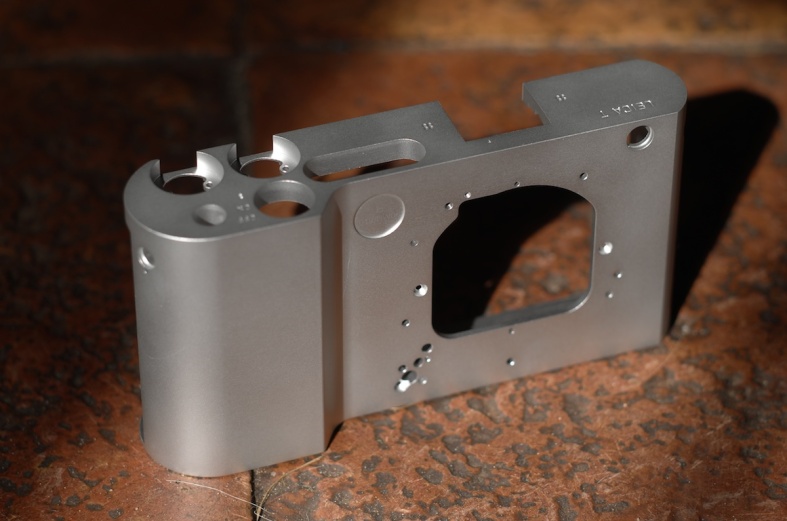
The Unibody itself – Leica T with Leica M75 APO Summicron

The Unibody itself – Leica T with Leica M75 APO Summicron from the back
The EVF
Some may be disappointed that the camera doesn’t have a built in EVF; I presume that the decision was made to keep the size to the minimum.
However, as far as I can gather the new Leica built EVF uses the same panel as those in the recent Olympus, Fuji and Sony cameras – it’s very high resolution and has a decent refresh rate. It tilts, and has an excellent dioptre adjustment. It also has an entirely new method for attaching to the camera – with the connections being on the inside edge of the hot shoe, this means that it fits almost flush with the back of the camera, and that it doesn’t drop out easily. It also has an eye sensor, which is reasonably fast and makes using the camera with the EVF feel just like using one of the competitor cameras which have a built in EVF. Personally I think the rather industrial looking design fits in well with the rest of the camera.

Leica T with the 18-56 Vario-Elmar Asph and the EVF
The EVF & GPS
An added bonus of the EVF is the built in GPS signal. This really seems to work very well – fantastic on a skiing holiday!.
You can see how the images show up on the screenshot of the map.
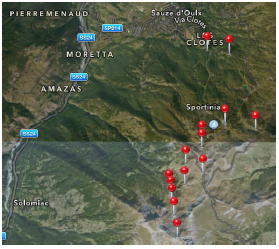
Screenview of GPS Map
The Lenses
There are two Auto Focus lenses launched with the camera:
Leica T 18-56mm f3.5 to f5.6 Vario Elmar Asph (28 – 85mm equivalent)
Leica T 23mm f2 Summicron Asph (35mm equivalent)
There will soon be more.
The lenses are made in Japan, not, I understand, by Panasonic. At any rate they are lovely lenses with metal bodies and buttery smooth operation. The manual focusing is focus by wire, but it’s really nicely damped and certainly feels like a traditional M focusing ring. I’ll talk about the image quality later on, but these lenses are lovely pieces of engineering and a pleasure to use. The lens hoods are metal and plastic.

Vario Elmar 12-56 Asph 65mm f5.2 3200 ISO 1:100th sec
The Interface
Well, forget about it looking reminiscent of the NEX-7 (or any other camera). This is different! I understand that the design and implementation is all in house at Leica. They’ve taken into account new tablet and phone interfaces and designed an icon based touch screen model. It takes a while to get used to it, but it does seem to be internally consistent, and it makes more and more sense as you use it.
Knobs, Dials and Buttons
Excluding the shutter release, on/off dial there are only two dials and one button! However there are three touch buttons on the right hand side of the LCD screen which remain the same in shooting mode, and are part of the basic interface.
The shutter release has a collar with On / Off / Flash – push it further than On and the popup flash pops up.
The video button starts video recording – and is also used for firmware updates (hold down the video button and switch on)
The Three touch screen buttons on the right hand side of the screen are as follows (starting from the top):
Mode button – touch it and then choose P / A / S / M / Scn
Camera button – touch it and you are shown your personal choice of options (there are up to nine options per screen) – you can have more than nine, but will need to scroll to find the lower ones. Removing options is as simple as dragging them to a bin. Adding options is as simple as dragging them from the Menu to the Camera icon.
Info button – this changes what you see on the rest of the LCD
The two dials function depending on the Mode chosen:
P mode – the left dial is user configurable (and sticky) the right dial is program shift
A mode – the left dial is user configurable (and sticky) the right dial is Aperture
S mode – the left dial is user configurable (and sticky) the right dial is Shutter Speed
M mode – the left dial is Aperture, the right dial Shutter speed
This varies slightly with M lenses attached via the adapter, more about that later.
Configuring the left hand dial is done simply by tapping it’s icon and choosing from a list.
I won’t go into much more detail about the interface – I’m sure there will be lots more information all over the internet. But it’s nothing like the complex and arcane systems on many other modern cameras – Leica have pared it down to basics. To me, the proof of it’s success is that you can put the camera down for a few weeks and then pick it up and use it again without getting confused.
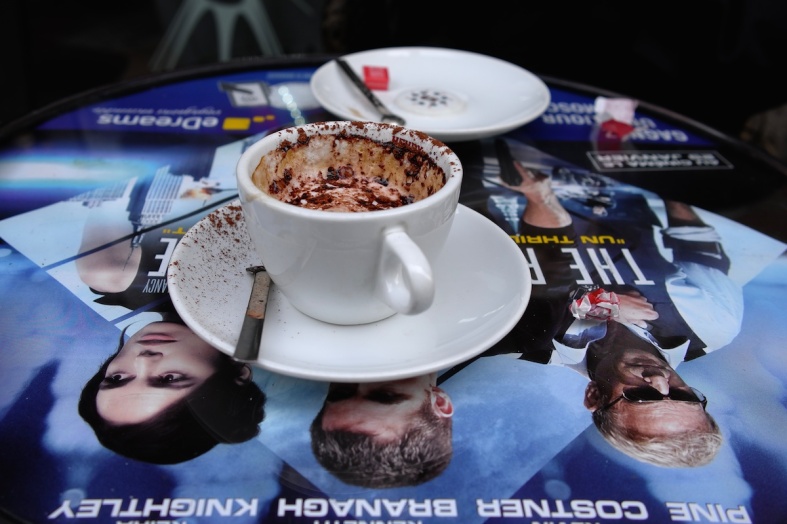
Leica T 23mm Summicron at f3.5 ISO 200
The Other Lenses
The Leica T has an adapter for using Leica M lenses – there is a 1.5x conversion factor, so that a 50mm M lens will behave like a 75mm lens on the Leica T. There is an optical pass through for the 6 bit coding on Leica M lenses, so that the camera knows which lens is being used. I’m not sure whether Leica has applied lens corrections, what I am sure of is that the camera works really well with all the M lenses I’ve tried (even the tricky 28 summicron). When you attach an M lens the left hand dial defaults to focus magnification, which can be set at 3 times or 6 times. There is no focus peaking, but I’ve found focusing to be really straightforward.
The lack of AA filter really makes the most of your collection of M and R lenses. I had rather despaired of finding any non M camera which would do this. It seems that I needn’t have worried.
I’ve also tried a number of other lenses by stacking adapters. Leica R lenses work really well – I’ve especially enjoyed the 60mm macro elmarit and the 80-200 f4. I’m rather hoping Leica will make an R adapter with a read through for ROM lenses, but I have no knowledge about this. Certainly there is no reason that other companies might not make 3rd party adapters for different lenses.
Just as a little aside, the Leica T mount is noticeably larger than the Sony E mount (my casual measurement has the Sony at 46mm and the Leica T at 50mm). . . . I’ve not even discussed this with Leica, but I really see no reason why they couldn’t make a full frame camera later on with the same mount.
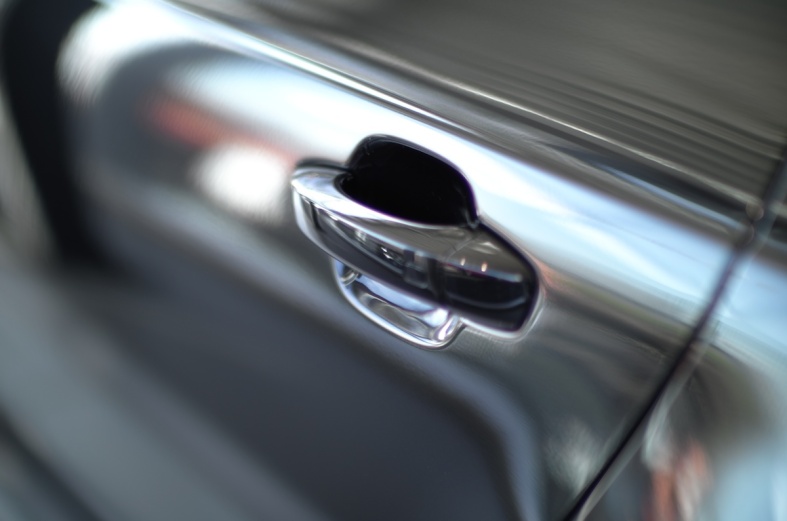
Leica M Noctilux Asph at f0.95

Leica 60mm f2.8 macro elmarit at f2.8 1:800th

Leica 60mm f2.8 macro Elmarit at f2.8 1:125th
The Images
The Leica T has a 16mp APS-c sensor. I guess that it’s a Sony manufactured sensor similar to the XVario and various other cameras. At any rate, the results are excellent – sharp, contrasty and very detailed. The camera has no AA filter; together with this, the very wide lens mount and the excellent M adapter makes for a compelling body to shoot with legacy lenses.
Keeping to 16mp is an interesting decision, especially in a climate where the megapixel wars are raging again. However, it’s a relief to have files which load reasonably fast, and which are perfectly capable of being enlarged up to 20” and more.
The resulting files are excellent – Leica have done a grand job with the jpg engine, and you can easily configure how you like your jpgs cooked in the touch screen menu. Of course, it’s the DNG (RAW) files which really matter, and they don’t disappoint. I imagine the camera will be shipping with Lightroom 5, and the T images already work very well – lots of latitude for recovery of highlights and shadows and excellent colour and dynamic range. High ISO doesn’t disappoint, 3200 is excellent and 6400 is normally quite useable.
Great files are nothing without great lenses, and the first two Leica T lenses are excellent. The little 23mm Summicron Asph is sharp from corner to corner, right from f2 onwards. The kit lens is also an excellent performer – I’ve been using kit lenses from Sony, Olympus, Fuji and Panasonic over the last few months and the 18-56 Leica Vario-Elmar Asph f3.5/f5.6 does an excellent job. Of course, it would be nice if it ware a little faster, but on the other hand it’s a useful range (28-85) and it’s remarkably small.

Octopus in Lanzarote with the 23mm Asph Summicron f4.5
The Comparison
Clearly it has to be done – I’ve spent the last months checking out all the top-notch mirrorless cameras – they all have their good points, and they all have their bad points. Certainly, if one is going to choose a camera based on a check list and a budget, then you would be unlikely to choose the Leica T.
If you’re interested, I’ve written a tongue in cheek article on the subject Gas and Mirrorless, where I finally came out in favour of the Olympus OMD E-M1 (but of course, I couldn’t mention the Leica T!) , You may find some of the images familiar – for much of the last 7 months I’ve been trekking around with a bag full of cameras! It’s been an interesting mission to make sure that nobody actually noticed the Leica T. I’ve spent considerable time with the Sony A7, (and the A7r) the Fuji X-T1 and the Olympus OMD E-M1, all of which are excellent cameras with excellent specifications. I’ve also spent a lot of time comparing images from the different cameras.
In terms of features, the Leica T is missing the built in EVF of the other cameras – on the other hand it does have GPS built into the plug in EVF. Added to which, with the new connection, and with a reasonably quick eye sensor the plug in EVF works similarly to those in the other cameras and has the obvious advantage of being tiltable (having said this the competitors all have tilting LCD screens which the Leica T is missing).
The Sony, Fuji and Olympus all have a huge number of features, whereas, in comparison the Leica T is much less bewildering; Of course, this is a double edged sword, from my point of view a camera has to be able to take the image, anything else I’d rather be without! Certainly, configuring and shooting with the Leica T is a much more straightforward matter than with either of the three competitors.
The OMD has built in Image Stabilisation, but the 2x crop factor makes it less useful with M and R lenses than the larger sensor of the Leica T. I think I’d say that with it’s pass through adapter and very quiet shutter the Leica T is probably the best of the bunch with respect to M and R Leica lenses. Unlike the competition it doesn’t have Focus Peaking, but it does have very good focus assist, I’ve found it really easy to focus – even with the Noctilux on the OUFRO!
I’m not going to go into a more detailed comparison. However, I will say that the images from the Leica are right up there with the best of the competition. I will also say that the delightful snick of the Leica shutter is in stark contrast to the clattering of the Sony A7r, and is quieter then either the Fuji or the Olympus. As you can see from the picture below, it also makes for a smaller package.

Rogue’s Gallery – Leica M, Sony A7, Leica T, Olympus OMD E-M1, Fujifilm X-T1
The Conclusion
Whatever else, the Leica T is an interesting and likeable camera. It takes excellent photos and is definitely a breath of fresh air in the face of the rapidly increasing menu systems of it’s competitors. It’s also rather ironic that whilst getting more complex, the Japanese companies seem to have been looking more retro.
I haven’t gone into the performance of the camera in much detail – mainly because I’ve been working with pre-production firmware which is always slower than the final iterations. However AF seems to be pretty snappy (although there are no phase detect points). Touch focusing on the LCD screen works really well; it would be nice to see Leica implement a touch-shutter (I’ve asked – perhaps they will).
I had always felt that Leica would do well to join the µ43 rather than inventing a new lens mount (especially considering their connection with Panasonic). I’ve changed my mind – the new lenses really are lovely, and the very large lens mount does seem to keep their options open for the future. New lenses are coming later in the year, and in the meantime shooting with Leica M and R lenses is a really viable option. I’ve been using the R 60mm macro Elmarit and the R 80-200 f4 zoom, together with the M135 APO Telyt, and there isn’t much that’s more fun than shooting the Noctilux wide open with an extension tube.
The image quality is excellent and the camera is fun to use, easy to carry and a lovely object. It also opens exciting new opportunities for Leica; I’m sure that new bodies will follow, but in the meantime we have a capable and very different camera to use right now. I certainly want one!
More Shots from the Leica T by Jono Slack.

Scarlett Rose Slack taken with the Leica T and the Leica 135mm Apo Telyt at f3.4
The Ulterior Motive
Our Grand-daughter Scarlett Rose Slack was born in Norwich Hospital on 26th April 2013. She should have been born on August 6th, making her more than 15 weeks early. For a while things were very scary and frightening for her parents, and very unpleasant for her (all those tubes and drugs). When she was born she was 1lb 10oz (740gms)
The Staff at NICU looked after her with huge dedication and attention, and her parents were very brave. She was in NICU for 73 days. When she left hospital for home she weighed nearly 4lb.
Scarlett was very angry and very determined. Now, Almost a year later, She is a feisty and charming young lady, deeply in love with her brother Oscar, and giving her parents the run around big time.
To help NICU to provide the best possible service to other lucky babies, and also as a sign of recognition of what they have done for Scarlett; some of Scarlett’s relations and friends are doing a 100km bicycle ride on the day after her first birthday (yes, me too I’m afraid).
If you would like to donate to a fantastic cause, please log on to Scarlett’s Cyclers Virgin Giving website: Click on Scarlett’s Cyclers below. I have also put together a ‘roll of film’ (36 images) to celebrate Scarlett’s first year – Some of them are with Leica T – I hope you enjoy them.
This is also a good opportunity to thank the many many people who have already given so generously (you know who you are even if we don’t)
THANK YOU.
Scarlett’s first year (images)
Scarlett’s Cyclers (Virgin Giving Page)
Jono Slack

